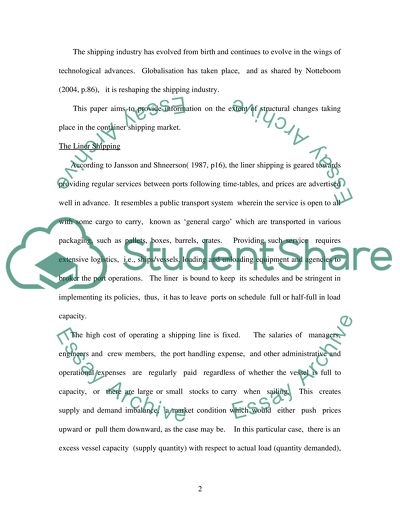Cite this document
(Structural Changes in Container Shipping Industry Essay, n.d.)
Structural Changes in Container Shipping Industry Essay. Retrieved from https://studentshare.org/macro-microeconomics/1516526-shipping-economics
Structural Changes in Container Shipping Industry Essay. Retrieved from https://studentshare.org/macro-microeconomics/1516526-shipping-economics
(Structural Changes in Container Shipping Industry Essay)
Structural Changes in Container Shipping Industry Essay. https://studentshare.org/macro-microeconomics/1516526-shipping-economics.
Structural Changes in Container Shipping Industry Essay. https://studentshare.org/macro-microeconomics/1516526-shipping-economics.
“Structural Changes in Container Shipping Industry Essay”, n.d. https://studentshare.org/macro-microeconomics/1516526-shipping-economics.


